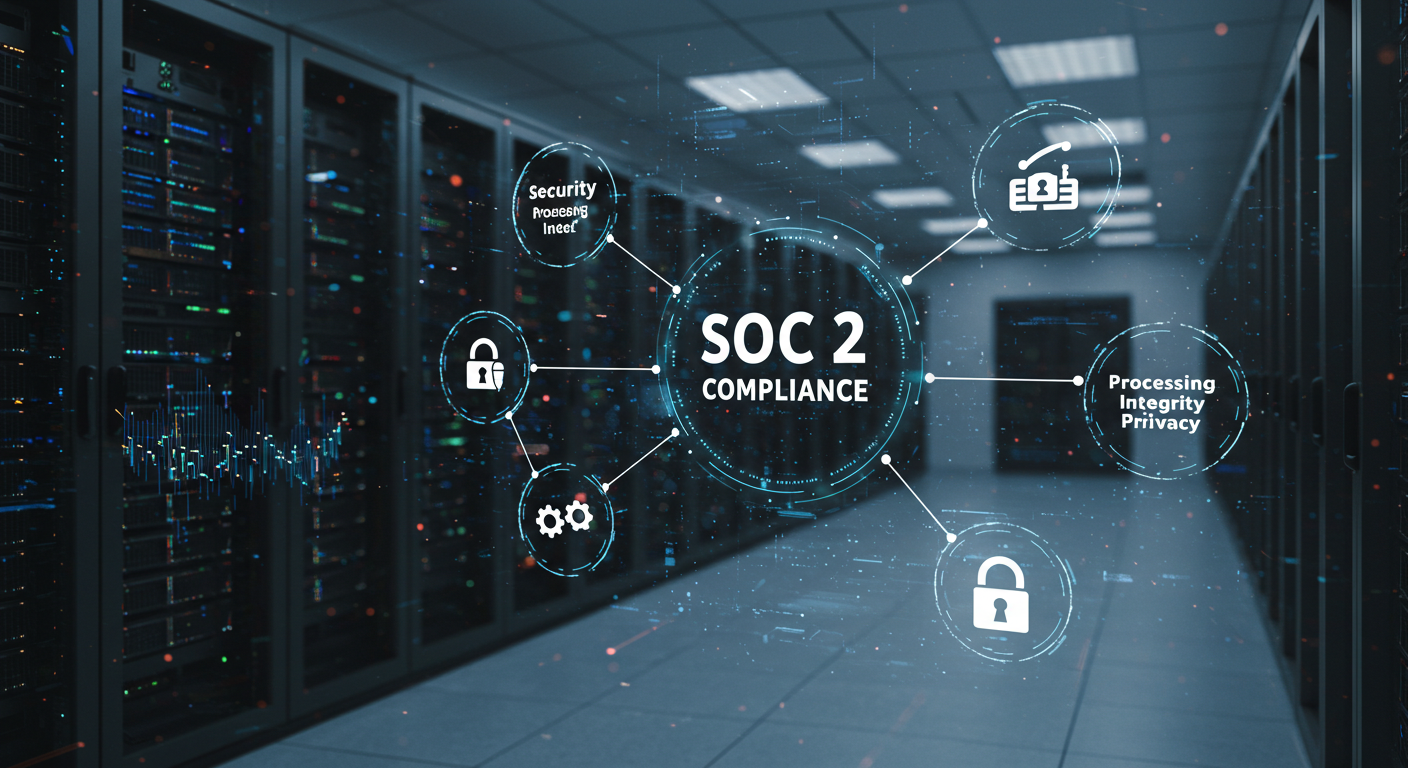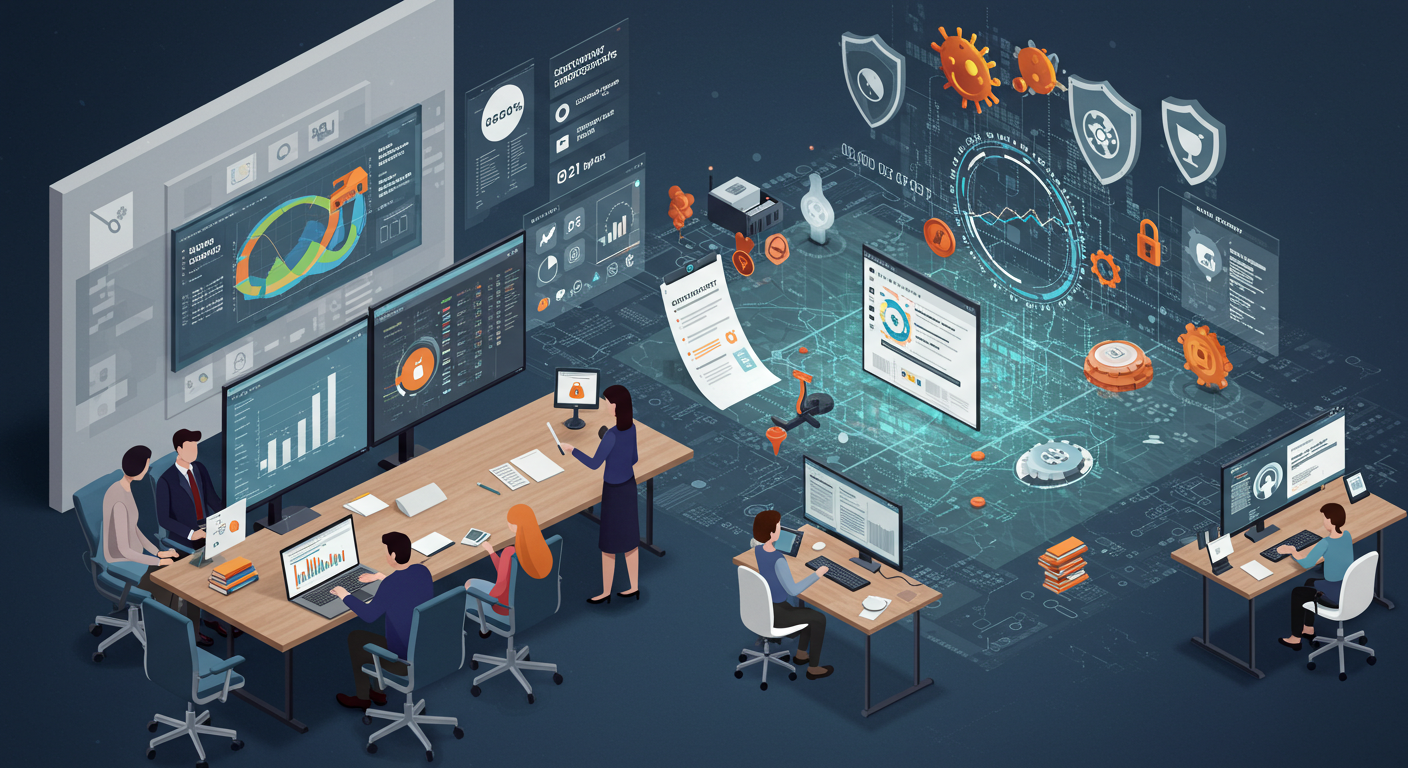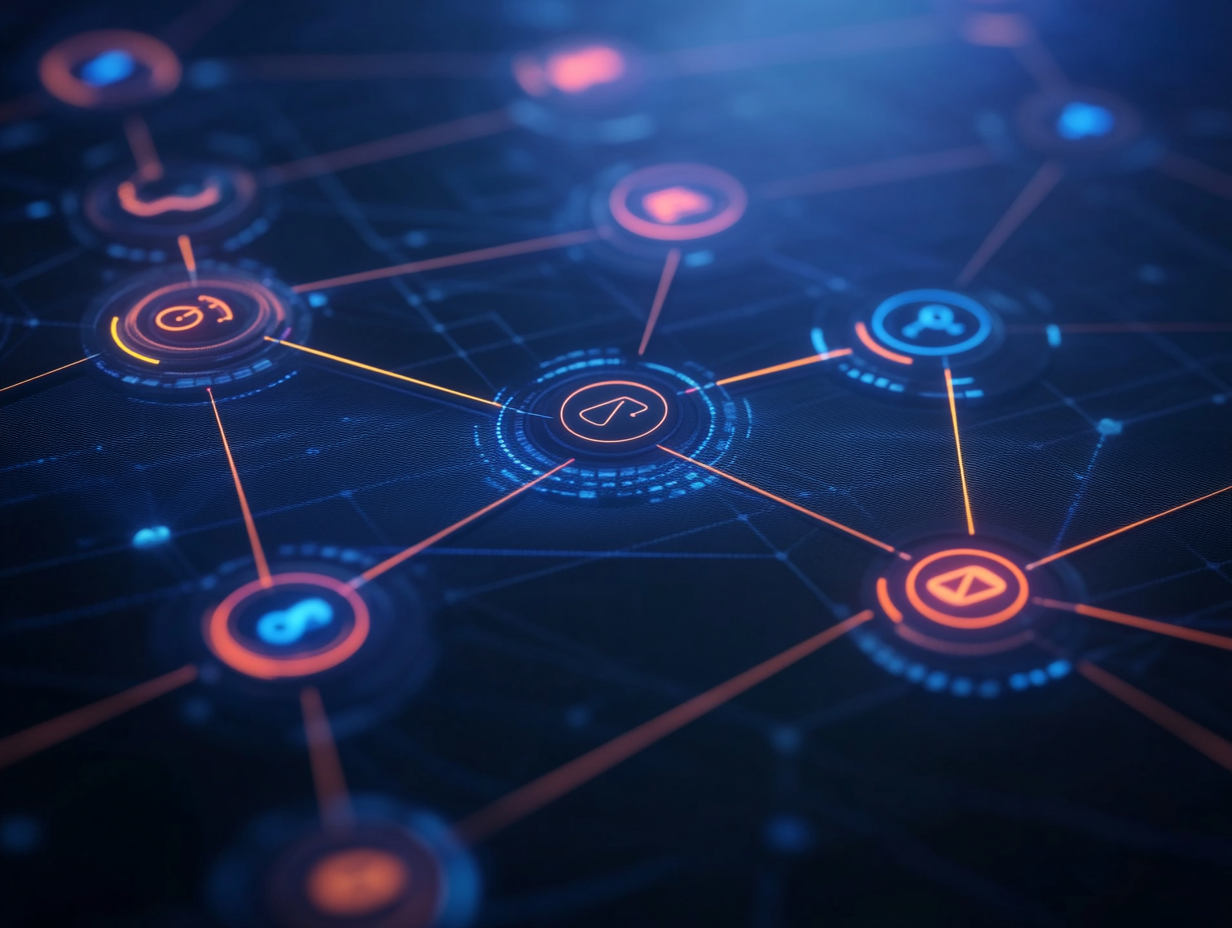Cybersecurity for Banks – Nowadays, numerous banks and financial institutions worldwide utilize tools to simplify their customer service processes.
These tools include banking apps, ATMs, chatbots, P2P payments, CRM systems, and e-statements. As a result, individuals can conveniently conduct transactions using their phones or computers.
Despite the implementation of technologies by banks to streamline their operations and enhance service delivery, they now face the increasing challenge of cybercrimes.
Cybercriminals make attempts to steal money and sensitive information from banks. Therefore, there is a pressing need for robust cybersecurity solutions in this scenario.
In this guide, we will explore the issues that banks and financial institutions encounter in our society. We will also discuss cybersecurity threats. Examine countermeasures that these institutions can adopt to combat them.
What Are Cyber Threats?
The phrases cyber criminals and cyber threats are constantly in the news, but few people know what these terms mean. In general, anything that can be termed an intentional act of destroying, stealing, or disrupting data and digital life remains a cyber security threat.
Data breaches, computer malware, and denial-of-service attacks are examples of cyber threats.
On the other hand, cybercriminals are people who engage in criminal activities via the Internet.
The following list includes six critical threats that target banks and other financial institutions, like investment firms and credit unions.
Forms Of Cyber Threats for Banks And Their Consequences
As per one of the 2020 reports from VMware, the cases of cyber-attacks against financial institutions increased by 238%. Consequently, an organization lost approximately .72 million for each data breach in 2021 (IBM).
Therefore, the probability of succumbing to such an expensive and crippling cyber-fraud attack, especially when one operates in the financial industry, is on the higher end of the spectrum.
Based on these statistics, it is likely that you have fallen victim to a costly cyber-attack if you work in the financial services sector.
Below are the major cyber threats facing the financial sector
1. Phishing and Social Engineering schemes
Social engineering schemes are techniques employed by cybercriminals to make targets reveal sensitive data. While this technique is not new, it has evolved with emerging technologies.
Social engineering schemes include pretexting, tailgating, and phishing, with the latter being the most common.
Phishing
While navigating the internet, imagine receiving an innocent email or message that appears to be from your bank, but isn’t really from your bank. This trick is referred to as phishing. It’s an online deception where cybercriminals disguise themselves as trusted entities to get personal information.
To pull off a phishing attack, cybercriminals first study the behavior of people online to identify the easiest route to stealing information. Subsequently, they devise creative ways to trick people into clicking on or opening files. As soon as their file is clicked on, they gain access to your computer and can further incapacitate your organization using malware attacks.
Signs that can help you identify a phishing attempt
- Someone asks for your passwords, credit card details, or any other personal information
- Unreasonable threats
- Asense of urgency to make you act fast
- Spelling and grammatical errors in the message
- The URLs of the web address seem suspicious
- Offers that seem too good to be true
Phishing attacks lead to various negative consequences for individuals and organizations, including financial loss, data breaches, unauthorized access, malware infections, reputation damage, loss of trust, and legal matters.
2. Malicious Software
Ransomware is another form of cyber-attack that financial services face daily. A ransomware attack occurs when cybercriminals encrypt computers with malware to lock victims out of their computers and personal information. To unlock the files, they demand a ransom.
The most prevalent ransomware in the financial sector includes:
- Sodinokibi ransomware
- Conti V2 ransomware
- Lockbit ransomware
- Clop ransomware
- Egregor ransomware
- Avaddon
- Ryuk
Cybercriminals use numerous extortion tricks to pressure victims into paying the ransom, the most common method being publishing seized sensitive data.
Financial institutions are subject to strict rules demanding top-notch protection against data breaches and cyber-attacks. However, with ransomware attacks becoming more advanced, a successful attack could lead to more complications and dire consequences.
3. DDoS (Distributed Denial Of Service) Attacks and Network Jamming
According to a recent study, this type of attack is often experienced in the financial sector.
A DDoS attack occurs when a target’s server is overwhelmed with fake connection requests. These fake connection requests usually overload the server; leading the server to crash or go offline.
Financial institutions are the main targets of DDoS attacks because they operate on diverse surfaces, including customer accounts, IT infrastructure, and payment portals.
DDoS attacks cause severe damage, and cybercriminals may use the damage caused to their advantage in two ways.
- Launch an additional cyber-attack while the security teams are handling the DDoS attack
- Ask for a ransom to stop the DDoS attack, because cybercriminals are aware that having these systems up and running is paramount for the daily work of financial institutions
Network jamming
Wireless communication systems, such as Wi-Fi, mobile networks, Bluetooth, and GPS, can be disrupted by cybercriminals using a technique called jamming attacks. The main objective of these attacks is to hinder communication between devices, which could result in network downtime or the disruption of services.
To accomplish downtime or disruption cybercriminals use devices to create overwhelming signals that disrupt the normal functioning of a network. As a result, opportunistic hackers take advantage of this situation and engage in telecommunication fraud by employing call spoofing techniques.
4. Virtual Theft
Virtual theft refers to the act of stealing or illegally obtaining virtual property, information, or virtual gadgets in an online environment. This includes the theft of obscure information, financial statistics, login credentials, virtual foreign currency, or other stored assets present in the digital space.
Virtual piracy is often related to cybercrime and can involve various bureaucrats hacking, phishing, or exploiting vulnerabilities in virtual systems.
With more than 1 billion people registered in the online world, many of whom generate income through the sale of digital objects and property, the potential for fraud and theft is growing alarmingly.
As such, more than 30% of all users have encountered issues or faced challenges due to frequent mishaps, but only 25% have recovered things because the laws and strategies governing virtual theft are routinely questionable.
Steps For Protecting Financial Institutions from Cyber Threats
Cybersecurity problems keep evolving, and the banking sector needs to take action to protect itself because hackers are adapting and are constantly changing their tactics to compromise security when they encounter new defenses. Organizations must work with cybersecurity professionals and constantly strive to stay a step ahead.
Below are some of the steps that financial institutions can implement to protect themselves.
1. Develop A Cyber-Security Policy
A financial institution or business that doesn’t have a cyber-security policy could be leaving itself open to cyber-attacks. A cyber security policy outlines the rules and controls for protecting your company and the technology needed to protect data and information.
A cyber security policy in the banking industry should focus on the following:
- Confidentiality of customer information
- Integrity
- What information can and cannot be shared
- Handling confidential information
- Use of online materials and handling technology
- Setting standards for internet access and social media
- Preparing for any arising incident
2. Implement Security Awareness Training
Employee training on cyber-attack-related risks is indispensable, particularly for those who work in businesses and within financial organizations. A strategy on how employees should be trained about the essence of data protection and cyber security occurs in the security awareness training process.
The end intent is to eliminate the dangers brought forth by cyber-attacks.
For employees to take their security awareness training seriously, they must be convinced that guarding against threats is critical for the company. There should also be rules and steps for who to get in touch with if there is a case of security compromise.
3. Invest in cyber security solutions
Cybersecurity solutions are vital investment options for the banking system. This is a crucial step for financial institutions in the fast-paced digital age. In the same way, cyber crimes are also becoming more sophisticated with time as technology improves.
The following are the most common cyber-security measures in banks:
- Data encryption
- Vendor risk management
- Investing in threat intelligence
- Investing in cyber insurance
- Substantial access restrictions, such as MFA.
- Investing in end-point security
- Update software regularly
4. Protect Networks And Data
A bank must take the necessary measures to protect its networks and data. Data and sensitive information must be protected from outsiders and employees who intend to use the information for personal gain.
To ensure that your networks and data are safe and secure, it only makes sense to do the following:
- Hide your Wi-Fi name
- Encrypt network and data
- Secure your website with protected hosting
5. Monitor Web Traffic
Web traffic monitoring plays a crucial role in analyzing the users who visit your website. With the help of automated techniques, financial institutions can collect primary data like the number of users who visit their webpage within a certain period, the devices they use, the bounce rate, and actions performed.
However, bad bot traffic is on the rise and often involves website traffic from cybercriminals. In cases like this, bots are used to infiltrate social media accounts and websites with spam, intending to manipulate website data and disrupt user activity.
In addition, hackers may also infiltrate websites to glimpse the weak points of a system.
A bad bot attack may cause one or multiple servers to crash and in these cases it is imperative that the financial institution continues to monitor their web traffic for any anomalies. By doing this, a company can quickly identify and filter out bot traffic to enhance the performance of their website and protect it from damage.
6. Implement Access Controls
Installing a firewall is perhaps the easiest and most reliable method of controlling access to your systems. A firewall enables the approval of only authorized users to your system, all while granting other employees the freedom to work freely.
7. Implement Active Defense
While it is essential to install a firewall to prevent unauthorized users from accessing a system, active defense serves as a proactive and more involved approach to cyber security. It involves monitoring network activities, real-time response to security breaches, and engaging with potential threats.
In addition, it goes beyond installing firewalls by setting and including activities like threat hunting, countering cyber-attacks, responding to incidents, and mitigating future breaches.
Adopting Digital Strategies To Mitigate Cyber Security Risk for Banks and Financial Institutions
Digital identity
Digital identity is vital for mitigating cybersecurity risks and enhancing authentication and access control. In addition, unauthorized access and data breaches are significantly reduced, thanks to the adoption of digital identity systems.
Below are some critical aspects of how digital identity helps mitigate cyber security risks.
Strong Authentication
Strong authentication comes into play when users must provide additional evidence to prove their identity in a multi-factor authentication (MFA) process.
Multi-factor authentication includes using passwords, smart cards, biometric data, or any other information the user may have.
Identity Verification
Digital identity systems make it easy to cross-reference information via authoritative sources. This is meant to prevent identity theft and impersonation.
Access Control
Role-based and attribute-based access controls are organizations’ most commonly used methods to control resource access. In these cases, authorized users only get access to the data and information they need to perform their tasks.
Identity And Access Management (IAM)
IAM solutions assist organizations in managing user identity and monitoring user activities. As a result, there are real-time responses to suspicious activities.
Ongoing Surveillance
Thanks to digital identity, financial institutions and banks can continuously monitor user activities. The system triggers an alert if a user gets access to information they are not supposed to access.
Data Protection
Digital identity and data protection work closely to enforce data encryption and ensure that only authorized users can access sensitive information.
Compliance And Regulation
HIPAA and GDPR are legal and regulatory requirements related to data security. In this context, digital identity solutions often align with these laws to reduce the legal and financial consequences of data breaches.
Faster Incidence Response
A well-implemented digital identity system can help identify a security breach and its source in real-time, reducing the impact of the breach and saving the resources that would have been used for incident response.
User Education And Awareness
If you want to educate users on the importance of cyber security effectively, digital identity systems can come in handy because users are more likely to take cyber security best practices seriously if they understand digital identity.
Activity Monitoring And Alerts
Monitoring activities and receiving alerts are crucial to keeping your computers and devices secure. Monitoring helps organizations protect their digital assets and address issues before they become major problems.
Threat Mitigation
If an alert is triggered, security teams can determine the root cause of the problem and take the necessary steps to reduce the threat. They can achieve this by isolating hacked systems, canceling user access, and fixing security holes with patches.
Alert Mechanisms
Alerts are created when the monitoring system notices behaviors that don’t match the usual rules. In most cases, the alerts are usually personalized to fit the organization’s requirements, and in case of any security breaches, they signal the security team to take the necessary actions.
Continuous Monitoring
Continuous monitoring is keeping an eye on people’s activities like logging in, accessing files, sending and receiving data over the network, and also how an organization has set up its computer systems. To stay safe, continuously counter-checking the tasks mentioned above is critical.
Compliance And Reporting
Many global rules and guidelines encourage companies to establish robust systems for monitoring activities and generating alerts. These systems are vital in investigating and reporting security breaches, acting as guardians to prevent and address incidents, especially in financial institutions.
Fraud Prevention Solutions
It is without a doubt that cyber fraud has accelerated at an alarming rate, especially in the more hybrid work environment. Banks and financial institutions remain the main targets for identity theft and transactional fraud.
While the shift to cloud storage continues to accelerate, there is a likelihood of more security challenges evolving.
Be that as it may, below are some of the best practices that can significantly enhance the security of your data and information and prevent fraud.
Update Your Computer And Mobile Devices Continually
Cybercriminals easily access information stored on computers and mobile devices via known flaws in applications and operating systems. To avoid being a victim of cyber-attack, it only makes sense to keep operating systems, applications, and web browsers updated.
As a result, you will be better placed to patch any known security flaws, reducing the risk of exploitation.
Expert tip: program your computer and mobile device to always update automatically and manage the patches for you.
Use Antivirus Software And Anti-Malware Protection
Cybercriminals frequently take control of computers by infecting them with malware and employing other technical attacks like deploying viruses and botnets. The good thing is that plenty of suitable antivirus applications are on the market nowadays.
However, selecting only the software solution that adequately addresses your needs and requirements is essential.
Also, remember to update the software with the latest virus definitions and scan your computer regularly.
Expert tip: Most internet service providers offer free subscriptions to antivirus software. Always check with your provider for instructions associated with downloading the antivirus software.
Have Strong Passwords
Avoid the habit of using the same password for multiple accounts. The best practice is to use different passwords for different accounts while making the passwords as lengthy as possible.
Your passwords should also include uppercase and lowercase letters, numbers, and unique characters.
Expert tip: Add more protection by ensuring multi-factor authentication on every account that supports it.
Have A Robust Home Network
It is not uncommon for hackers to use your home network to access your private or confidential information. To that end, creating strong passwords for your Wi-Fi is prudent. Additionally, using security like WPA2 and ensuring your router is up to date while hiding your network from unauthorized access will also help secure your network.
Expert tip: You can obtain protection against cyber-attacks for all internet-connected devices, including game consoles, smart TVs, and household appliances
Backup Data On All Your Devices
Even the most reliable computers and devices get hacked, so as a precaution it is important to back up the data on your devices. You can achieve this by saving all your files on an external hard drive or using special backup software, this way you can retrieve your data in the event of device failure or unexpected accidents.
Expert tip: Providers like Google iCloud and Box have enabled features that enable users to back up their data and information to the cloud. Nevertheless, it is of the utmost importance to exercise caution when storing financial information in the cloud, as it is better suited for contacts, videos, and photos.
Advanced Malware Protection
As previously mentioned, cyber threats in financial institutions may take numerous forms, such as viruses, DDoS, phishing, supply chain attacks, and malware.
Malware comes in ransomware, Trojan, spyware, and fireless malware, among others.
By extension, if malware is advanced, it can penetrate a system and go undetected to achieve a particular objective, like financial gain.
In addition, advanced malware can target institutions within the same industry, such as banks in the financial sector.
It is worth noting that advanced malware takes the form of common malware but is usually modified to enhance its capability. In most cases, it replicates and inserts itself into other computer applications.
Worse still, it can lay dormant to test for conditions meant to block malicious files. Lying dormant is an attempt to fool the security software into believing that it is not malware.
Furthermore, advanced malware can incapacitate an entire IT infrastructure, delaying productivity and interrupting customer services.
To that end, advanced malware protection has been designed to help mitigate breaches that emanate from advanced malware.
Below are examples of advanced malware protection tools
Nest Generation Antivirus (NGAV)
This antivirus uses advanced algorithms, AI, and machine learning to detect and block advanced malware.
End-Point Detection (EDR) Tools
These tools monitor any suspicious activities while providing detailed insights into potential threats.
Sandboxing
Essential for the identification of unknown malware.
Zero Trust Security Frameworks
Zero Trust Security Frameworks approach assumes no authorized user should be trusted by default; hence, access is based on identity verification.
Machine Learning Solutions
These solutions are essential for enhancing malware detection while adapting to evolving trends.
Final Words
In conclusion, the need to protect financial institutions through robust cybersecurity solutions is undoubtedly central in today’s digital environment.
As banks and financial institutions fully embrace the digital age, ensuring strong security is more important than ever. They can effectively protect their valuable assets and data in this ever-changing digital era by using the robust security strategies mentioned above and leveraging digital identity solutions.
How BlueSteel Can Help?
Are you seeking a cybersecurity solution for financial institutions or intend to educate your employees about security? We specialize in simplifying and making security practical for firms in various sectors.
Security programs can often be complex, leading to confusion and compliance issues. BlueSteel Cybersecurity aims to bridge this gap by creating humanized cyber security solutions. Our team of experts is ready to assist you in achieving cybersecurity compliance and protecting your computer systems against cyberattacks.







